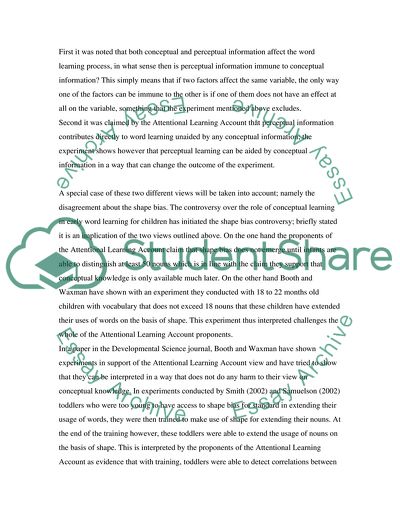Cite this document
(The Role of Conceptual and Perceptual Information in Early Childhood Essay, n.d.)
The Role of Conceptual and Perceptual Information in Early Childhood Essay. Retrieved from https://studentshare.org/social-science/1735296-discuss-the-evidence-that-children-show-a-shape-bias-in-their-interpretation-of-newly-encountered-words
The Role of Conceptual and Perceptual Information in Early Childhood Essay. Retrieved from https://studentshare.org/social-science/1735296-discuss-the-evidence-that-children-show-a-shape-bias-in-their-interpretation-of-newly-encountered-words
(The Role of Conceptual and Perceptual Information in Early Childhood Essay)
The Role of Conceptual and Perceptual Information in Early Childhood Essay. https://studentshare.org/social-science/1735296-discuss-the-evidence-that-children-show-a-shape-bias-in-their-interpretation-of-newly-encountered-words.
The Role of Conceptual and Perceptual Information in Early Childhood Essay. https://studentshare.org/social-science/1735296-discuss-the-evidence-that-children-show-a-shape-bias-in-their-interpretation-of-newly-encountered-words.
“The Role of Conceptual and Perceptual Information in Early Childhood Essay”, n.d. https://studentshare.org/social-science/1735296-discuss-the-evidence-that-children-show-a-shape-bias-in-their-interpretation-of-newly-encountered-words.


